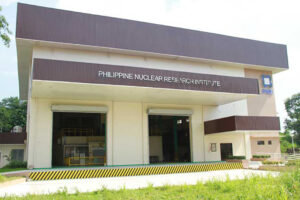
Nuclear regulatory overhaul signals gov’t gearing up to hit 2,400-MW target by 2032
THE creation of a nuclear energy program coordinating committee (NEP-CC) will ramp up preparations to hit an ambitious 2,400-megawatt (MW) target by 2032, analysts said.
“Hopefully this will hasten the clearing and approval of nuclear power construction and commissioning in the Philippines,” Bienvenido S. Oplas, Jr., president of the free market think tank Minimal Government Thinkers, said in a Viber message.
In an order dated Jan. 29, the Department of Energy (DoE) created NEP-CC to ensure its “effective participation” in the NEP-Inter-Agency Committee (NEP-IAC).
The DoE has revised its energy roadmap to incorporate in the 2023 to 2050 Philippine Energy Plan a clean energy scenario which envisions “a more diverse energy mix that includes nuclear energy.”
“As the country embarks on Phase 2… and Phase 3…, there is a need to reorganize the coordinating arm of the DoE to effectively and responsibly assist the NEP-IAC and realize the DoE’s goal of tapping 2,400 megawatts of nuclear power by 2032,” according to the order.
Phase 2 involves the preparatory work for the construction of a nuclear power plant after the drafting of a nuclear policy, while Phase 3 includes activities to build a first nuclear power plant.
Mr. Oplas said that the Philippines should move fast in nuclear development because of “economic imperatives.”
At a gross domestic product growth rate of 6%, the Philippines will require about 7-8 terawatt-hours of power yearly until 2030, he said.
On the other hand, “We are not surprised by this development. The DoE, it appears, has long been intent in abandoning science, economics, or reality,” Gerry C. Arances, executive director of the Center for Energy, Ecology, and Development, said in a Viber message.
Citing the data from the Institute for Energy Economics and Financial Analysis, Mr. Arances said that the levelized cost of nuclear power in 2023 was expensive compared to utility-scale solar and wind.
“Why invest in expensive power sources with a track record of safety issues when there are safer, cheaper options like renewable energy?,” he said.
Terry L. Ridon, a public investment analysts and convenor of think tank InfraWatch PH, said that the government should “immediately schedule discussions with international partners to discuss its viability, particularly its safety, in the Philippines,” if it is to decide to introduce nuclear energy into the power mix.
“Developing nuclear energy will ultimately depend on the international partner, as pricing, safety standards and technology will be determined by the track record of this partner,” Mr. Ridon said. — Sheldeen Joy Talavera



